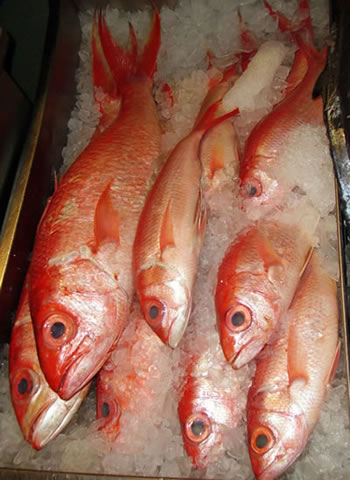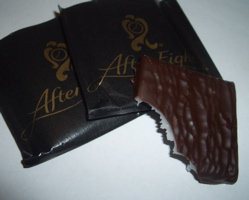Tonight I cooked tomatillos for the first time.
I suspect that most of my regular readership knows at least vaguely what a tomatillo, also known as a husk tomato, is, but just in case, these are tomatillos:
 Physalis philadelphica
Physalis philadelphicaThey're green and tart, and from what I can tell, their primary use is making salsa verde.
They're also great for confusing cashiers at the grocery store. Apparently, in New Brunswick tomatillos are purchased so infrequently that they were not in the computer system; a manager had to trek to the produce aisle to find the price.
It's too bad, because they're absolutely delicious. I took a bite of one before cooking, out of curiosity, and found it very pleasant. It was tart, yes, but flavorful and not overwhelming. It didn't make my face screw up the way it does when I lick a lemon; it was more like the pleasant tartness of a granny smith apple (which it strongly resembled visually) without any of the sweetness.
The dish I was making was not salsa verde, but it may as well have been. It was basically a
souped up version of salsa verde, with lots of pureed corn, peas for extra green color, and for no discernible reason, canned green chilies. (That's what was in the recipe, and I like to follow recipes one time through before I fix them up.) Next time I make it, no cans necessary -- the jalepeños, for some reason, are thriving on our balcony and we should have a nice harvest starting soon. (It will add some heat, too -- the soup could use a little more hot pepper.) I can say with some satisfaction, however, that I used home-made veggie broth for the first time, with outstanding results.
Anyway, back to the tomatillo.
Tomatillos are in the nightshade family, although they are in a different genus from tomatoes. An interesting fact from
Wikipedia is that tomatillos are self-incompatible; that is, you need at least two tomatillo plants to get any fruit.
Whole Foods, meanwhile, indicates that they can be used to tenderize meat, probably due to their acidic content since it doesn't mention anything about our friends the enzymes.
According to
Purdue, evidence of tomatillos has been found at the site of Tehuacán in Mexico, although they give a date range of 900 BCE to 1542 CE, which is not terribly helpful. (A lot can happen in 2100 years!) They do add that in pre-conquistador Mexico, the tomatillo was actually preferred over the tomato. (I would have to guess that their European visitors did not share this opinion, because we do not eat spaghetti and meatballs in salsa verde.) There was also, apparently, a lot of confusion about exactly which fruits were which, because Aztec words got a little mixed up by the Europeans.
GourmetSleuth, however, seems pretty sure that the domesticated tomatillo dates back to at least 800 BCE. They also have information that's a bit easier to read about the whole tomato-tomatillo-tomatl-xitomatl-miltomatl controvery. (Dang, now I wish I spoke
Nahuatl. Apparently "tomatl" means approximately "round and plump", so that's a word I can get behind! Also, these are the same folks who gave us
chocolate.) They also agree with Whole Foods that tomatillos freeze well but should be frozen whole.
So there you have it, the tomatillo in a nutshell. Or in a tomatillo husk, as the case may be.
The moral of the story: go buy some tomatillos and eat them, cook them, make salsa verde, confuse cashiers. I think they'd probably make an interesting margarita, too. Too bad I cooked all the ones I got today.




 Pour everything into a colander lined with cheesecloth. The whey goes down the drain, or into a bowl if you want to hold on to it.
Pour everything into a colander lined with cheesecloth. The whey goes down the drain, or into a bowl if you want to hold on to it. 










